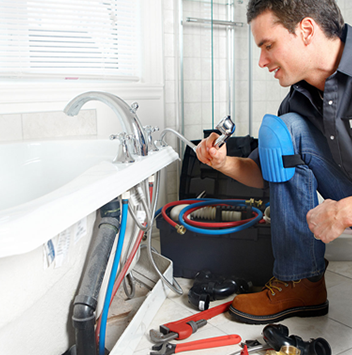It was a typical Sunday morning. Sarah had just finished her breakfast and was about to rinse her dishes when she noticed the water in her kitchen sink wasn’t draining. As panic started to set in, she remembered the DIY plumbing tips she’d recently read. With a deep breath, she realized this was her chance to tackle a common household problem on her own. Like Sarah, many homeowners face plumbing issues, with drain clogs being one of the most frequent. In fact, according to a recent survey by the National Association of Home Builders, 33% of homeowners reported dealing with clogged drains in the past year.
If you’ve found yourself in a similar situation, don’t worry! This guide will walk you through some effective DIY methods to unclog your drains, saving you time and money while empowering you to handle basic plumbing tasks.
Understanding the Common Causes of Clogs
Before we dive into the solutions, it’s essential to understand what causes drains to clog. The most common culprits include:
- Hair and soap scum (especially in bathroom sinks and showers)
- Food particles and grease (in kitchen sinks)
- Foreign objects (toys, jewelry, etc.)
- Mineral buildup from hard water
As Josh Rooters, a seasoned plumbing expert with over 20 years of experience, often says, “Understanding the cause of a clog is half the battle in solving it.”
DIY Methods to Unclog Your Drains
1. The Boiling Water Method
This simple yet effective method can work wonders for minor clogs:
- Boil a pot of water
- Carefully pour it down the drain in stages, allowing each pour to work for a few seconds
- Follow up with cold water to flush the drain
2. The Plunger Technique
A plunger isn’t just for toilets! Here’s how to use it effectively on sinks:
- Fill the sink with a few inches of water to create a seal
- Place the plunger over the drain, ensuring it covers the opening completely
- Plunge vigorously for 20-30 seconds
- Remove the plunger and check if the water drains
3. The Baking Soda and Vinegar Solution
This eco-friendly method is both effective and gentle on your pipes:
- Pour 1/2 cup of baking soda down the drain
- Follow with 1/2 cup of white vinegar
- Cover the drain with a stopper or rag
- Let it sit for 15 minutes, then flush with hot water
4. The Drain Snake Method
For more stubborn clogs, a drain snake can be your best friend:
- Insert the snake into the drain
- Gently push it through until you feel resistance
- Rotate the handle to break up the clog
- Slowly pull the snake out, cleaning it as you go
- Run hot water to clear any remaining debris
When to Call a Professional
While these DIY methods are effective for many common clogs, some situations require professional intervention. If you’ve tried these methods without success, or if you’re dealing with multiple clogged drains, it may be time to call in an expert. Professional plumbers have specialized tools and expertise to handle more complex issues safely and efficiently.
Preventing Future Clogs
An ounce of prevention is worth a pound of cure, especially when it comes to plumbing. Here are some tips to keep your drains flowing freely:
- Use drain strainers to catch hair and food particles
- Avoid pouring grease down the kitchen sink
- Run hot water through your drains regularly
- Consider using enzymatic drain cleaners monthly for maintenance
Remember, proper drain maintenance not only prevents clogs but also extends the life of your plumbing system. As a homeowner, taking these simple steps can save you from future headaches and costly repairs.
Unclogging drains doesn’t have to be a daunting task. With these DIY methods in your toolkit, you’re well-equipped to handle common plumbing issues. Not only will you save money, but you’ll also gain a sense of accomplishment in maintaining your home.
As we wrap up, here’s a thought to ponder: How might your approach to household maintenance change now that you have these plumbing skills at your fingertips? Perhaps, like Sarah, you’ll find yourself more confident in tackling other home improvement projects. Remember, every DIY success story starts with a willingness to learn and a can-do attitude.

